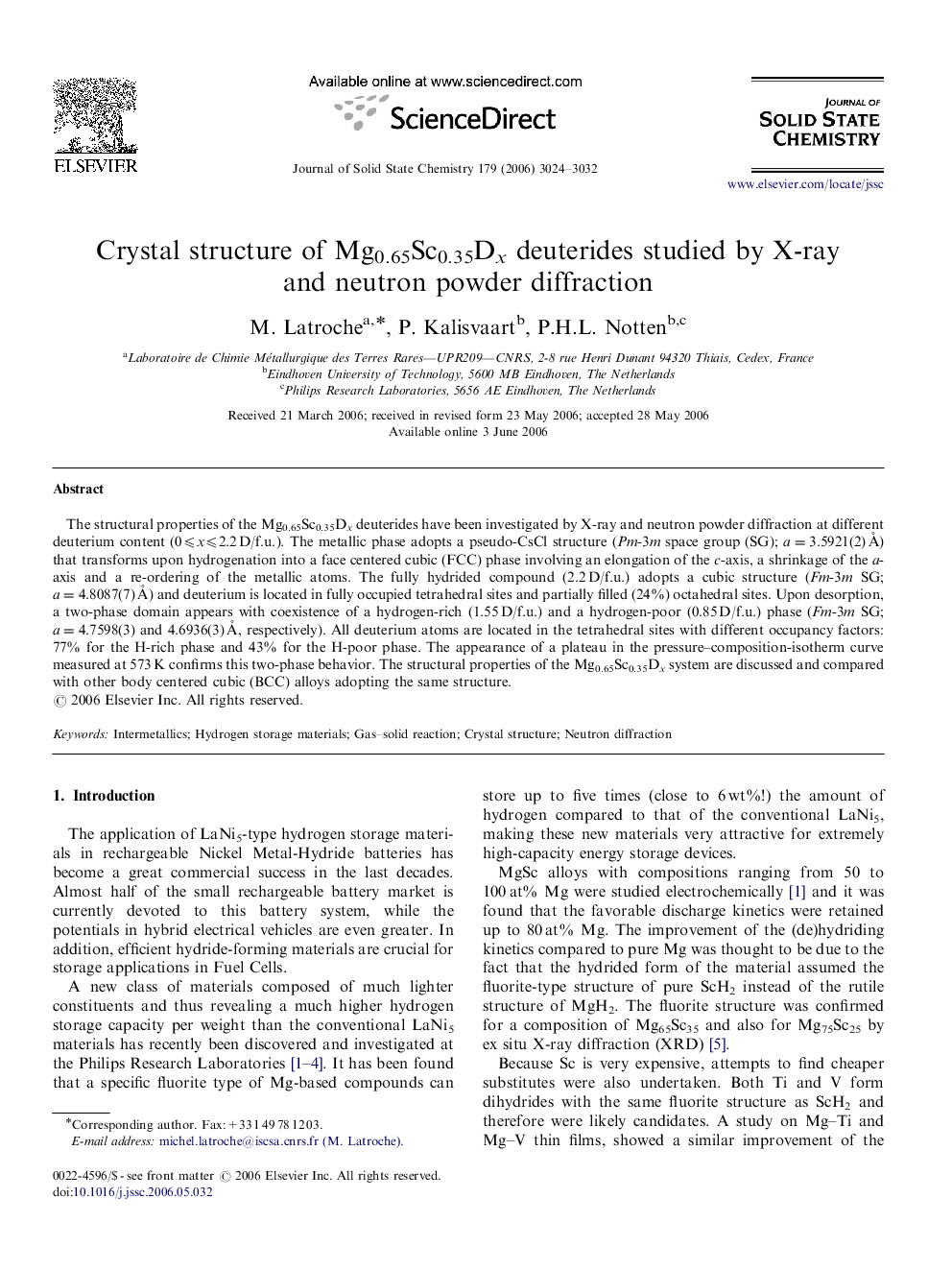| Article ID | Journal | Published Year | Pages | File Type |
|---|---|---|---|---|
| 1333902 | Journal of Solid State Chemistry | 2006 | 9 Pages |
The structural properties of the Mg0.65Sc0.35Dx deuterides have been investigated by X-ray and neutron powder diffraction at different deuterium content (0⩽x⩽2.2 D/f.u.). The metallic phase adopts a pseudo-CsCl structure (Pm-3m space group (SG); a=3.5921(2) Å) that transforms upon hydrogenation into a face centered cubic (FCC) phase involving an elongation of the c-axis, a shrinkage of the a-axis and a re-ordering of the metallic atoms. The fully hydrided compound (2.2 D/f.u.) adopts a cubic structure (Fm-3m SG; a=4.8087(7) Å) and deuterium is located in fully occupied tetrahedral sites and partially filled (24%) octahedral sites. Upon desorption, a two-phase domain appears with coexistence of a hydrogen-rich (1.55 D/f.u.) and a hydrogen-poor (0.85 D/f.u.) phase (Fm-3m SG; a=4.7598(3) and 4.6936(3) Å, respectively). All deuterium atoms are located in the tetrahedral sites with different occupancy factors: 77% for the H-rich phase and 43% for the H-poor phase. The appearance of a plateau in the pressure–composition-isotherm curve measured at 573 K confirms this two-phase behavior. The structural properties of the Mg0.65Sc0.35Dx system are discussed and compared with other body centered cubic (BCC) alloys adopting the same structure.
Graphical abstract3D View of the crystal structure of Mg0.65Sc0.35D2.2.Figure optionsDownload full-size imageDownload as PowerPoint slide
